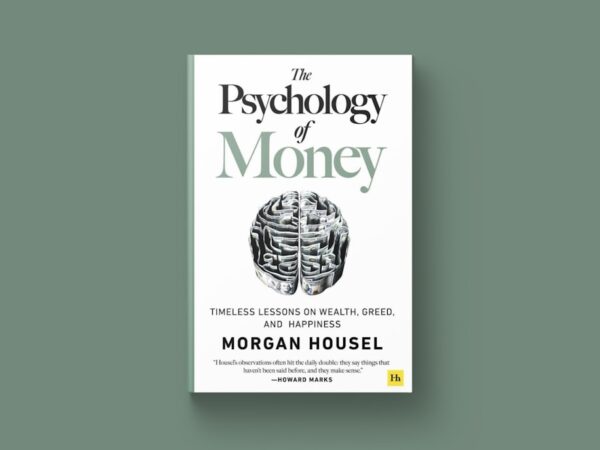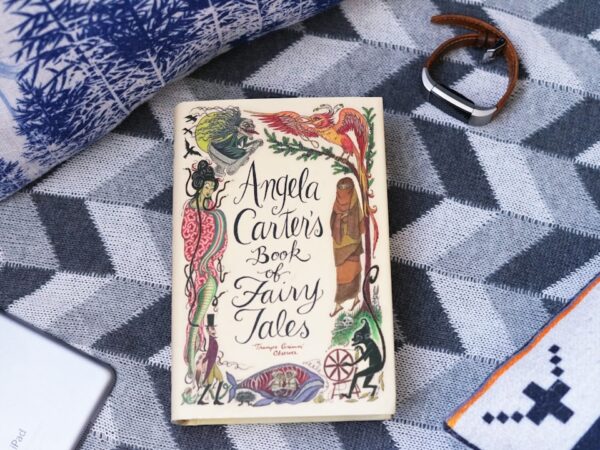
Roald Dahl: Books to Films.
Roald Dahl is one of the most beloved and celebrated authors of children’s literature. Born in Wales in 1916, Dahl went on to write some of the most iconic and imaginative stories of all time. His books, such as “Charlie and the Chocolate Factory,” “Matilda,” and “The BFG,” have captivated generations of readers with their whimsical characters, fantastical settings, and timeless themes.
Dahl’s impact on children’s literature and film cannot be overstated. His stories have been translated into dozens of languages and have sold millions of copies worldwide. In addition to his success as an author, Dahl’s books have also been adapted into numerous films, bringing his magical worlds to life on the big screen.
Key Takeaways
- Roald Dahl’s books have been adapted into numerous successful films.
- The process of adapting Dahl’s books into films involves significant changes and challenges.
- Dahl’s books have undergone an evolution in their film adaptations, with varying degrees of success.
- Some of the most popular Dahl books turned into films include Charlie and the Chocolate Factory and Matilda.
- Actors such as Gene Wilder and Mara Wilson have brought Dahl’s characters to life on screen.
From Page to Screen: The Process of Adapting Dahl’s Books into Films
Adapting Roald Dahl’s books into films is no easy task. His stories are filled with vivid descriptions, larger-than-life characters, and fantastical elements that can be challenging to translate onto the screen. However, when done right, these adaptations can capture the essence of Dahl’s work and transport audiences into his magical worlds.
One of the biggest challenges in adapting Dahl’s books is capturing his unique voice and style. Dahl had a distinct way of writing that combined humor, wit, and a touch of darkness. Translating this onto the screen requires a careful balance of tone and a deep understanding of Dahl’s storytelling techniques.
Creative decisions play a crucial role in the adaptation process. Filmmakers must decide which elements of the book to include, which to omit, and how to bring the story to life visually. They must also make choices about casting, set design, and special effects that will enhance the story while staying true to Dahl’s vision.
The Evolution of Dahl’s Books into Films: A Retrospective
The first adaptations of Roald Dahl’s books were made in the 1970s and 1980s. These early films, such as “Willy Wonka & the Chocolate Factory” and “The Witches,” were met with both critical acclaim and commercial success. They captured the whimsy and magic of Dahl’s stories, while also staying true to his darker themes.
Over the years, adaptations of Dahl’s books have evolved, both in terms of storytelling techniques and visual effects. The 1996 film adaptation of “Matilda,” for example, used innovative special effects to bring the character’s telekinetic powers to life. Similarly, the 2016 adaptation of “The BFG” utilized cutting-edge CGI to create the giant’s world.
The Most Popular Dahl Books Turned into Films: A Review
| Book Title | Year Published | Year Film Released | Box Office Gross (in millions) | IMDb Rating |
|---|---|---|---|---|
| Charlie and the Chocolate Factory | 1964 | 2005 | 475.0 | 6.6 |
| Matilda | 1988 | 1996 | 33.1 | 6.9 |
| The Witches | 1983 | 1990 | 15.4 | 6.8 |
| James and the Giant Peach | 1961 | 1996 | 37.4 | 6.7 |
| The BFG | 1982 | 2016 | 183.3 | 6.4 |
Some of the most successful adaptations of Roald Dahl’s books include “Charlie and the Chocolate Factory,” “Matilda,” and “James and the Giant Peach.” These films not only captured the essence of Dahl’s stories but also introduced a new generation of readers to his work.
“Charlie and the Chocolate Factory,” directed by Tim Burton in 2005, starred Johnny Depp as Willy Wonka. The film stayed true to Dahl’s dark humor and whimsical style, while also adding its own unique visual flair. Depp’s portrayal of Wonka was both eccentric and endearing, capturing the essence of the character as described in the book.
“Matilda,” directed by Danny DeVito in 1996, brought Dahl’s beloved character to life on screen. The film stayed true to the book’s themes of empowerment and resilience, while also adding its own comedic touches. Mara Wilson’s performance as Matilda was widely praised for capturing the character’s intelligence and determination.
“James and the Giant Peach,” directed by Henry Selick in 1996, used stop-motion animation to bring Dahl’s story to life. The film’s unique visual style perfectly captured the whimsy and magic of the book, while also adding its own creative touches. The voice cast, which included Richard Dreyfuss and Susan Sarandon, brought the characters to life with their performances.
The Actors Who Brought Dahl’s Characters to Life on Screen
One of the most memorable aspects of Roald Dahl’s film adaptations is the performances of the actors who bring his characters to life. From Gene Wilder’s iconic portrayal of Willy Wonka to Mara Wilson’s endearing performance as Matilda, these actors have left a lasting impression on audiences.
In “Charlie and the Chocolate Factory,” Johnny Depp’s portrayal of Willy Wonka was both eccentric and captivating. Depp brought a sense of mystery and charm to the character, capturing Wonka’s whimsical nature while also hinting at his darker side. His performance was widely praised for its depth and nuance.
Mara Wilson’s performance as Matilda in the film adaptation of the same name was equally impressive. Wilson perfectly captured the character’s intelligence, wit, and determination, bringing her to life in a way that resonated with audiences. Her portrayal of Matilda remains one of the most beloved in Dahl’s film adaptations.
In “James and the Giant Peach,” the voice cast brought Dahl’s characters to life with their performances. Richard Dreyfuss, who voiced the character of Centipede, brought a sense of humor and mischief to the role. Susan Sarandon, who voiced Miss Spider, added a touch of warmth and compassion to her character. These performances helped bring Dahl’s characters to life in a way that was true to his vision.
The Role of Music in Dahl’s Film Adaptations: A Comparative Analysis
Music plays a crucial role in Roald Dahl’s film adaptations, helping to set the tone and enhance the storytelling. Different adaptations have taken different approaches to incorporating music into the films, each with its own unique style and impact.
In “Charlie and the Chocolate Factory,” the music was composed by Danny Elfman, who is known for his whimsical and fantastical scores. Elfman’s music perfectly captured the magical and otherworldly nature of Dahl’s story, adding an extra layer of enchantment to the film.
In “Matilda,” the music was composed by David Newman, who created a score that was both playful and empowering. The music helped to convey the character’s journey from a neglected child to a powerful young girl, adding depth and emotion to the film.
In “James and the Giant Peach,” the music was composed by Randy Newman, who created a score that was both whimsical and melancholic. The music perfectly captured the bittersweet nature of Dahl’s story, adding an extra layer of emotion to the film.
Dahl’s Legacy: The Lasting Impact of his Books and Films
Roald Dahl’s books and films have had a lasting impact on children’s literature and film. His stories have captivated generations of readers with their imaginative worlds, relatable characters, and timeless themes. Dahl’s work continues to resonate with audiences today, reminding us of the power of imagination and the importance of kindness and empathy.
Dahl’s influence on children’s literature can be seen in the works of contemporary authors such as J.K. Rowling, Neil Gaiman, and Lemony Snicket. These authors have been inspired by Dahl’s storytelling techniques, his ability to create memorable characters, and his willingness to tackle dark and complex themes.
In film, Dahl’s adaptations have become classics in their own right. They have introduced millions of viewers to his magical worlds and have helped to bring his stories to life in a way that is true to his vision. The success of these adaptations has paved the way for other children’s books to be adapted into films, further expanding the reach and impact of children’s literature.
Dahl’s Unpublished Works and their Potential for Film Adaptation
In addition to his published works, Roald Dahl also left behind a number of unpublished manuscripts and story ideas. These works, which have been discovered and released posthumously, offer a glimpse into Dahl’s creative process and provide new material for potential film adaptations.
One of the most notable unpublished works is “The Minpins,” a story about a young boy who befriends a group of tiny people who live in the woods. The story is filled with Dahl’s trademark whimsy and imagination, making it a prime candidate for a film adaptation.
Another unpublished work is “Billy and the Minpins,” a story about a young boy who embarks on an adventure to save his village from a group of terrifying creatures. The story combines elements of fantasy and adventure, making it an ideal candidate for a film adaptation.
These unpublished works offer new opportunities for filmmakers to bring Dahl’s stories to life on the big screen. They also provide fans with new material to explore and enjoy, keeping Dahl’s legacy alive for future generations.
Dahl’s Books and Films for Children: A Comparison and Analysis
Roald Dahl’s books and films differ in their approach to children, but both share a common goal of entertaining and inspiring young readers. While his books are often darker and more complex than their film adaptations, both mediums have the power to captivate and engage young audiences.
Dahl’s books are known for their dark humor, whimsical characters, and fantastical settings. They often tackle complex themes such as greed, injustice, and the power of imagination. These themes are explored in a way that is accessible to young readers, allowing them to grapple with important ideas while still enjoying a thrilling story.
In contrast, Dahl’s film adaptations often tone down the darker elements of his stories, making them more suitable for a younger audience. While the films still capture the whimsy and magic of Dahl’s worlds, they often omit or simplify some of the more complex themes and plot points.
Despite these differences, both Dahl’s books and films have had a profound impact on children. They have introduced young readers to the joy of reading, sparked their imaginations, and encouraged them to think critically about the world around them. Whether experienced through the pages of a book or on the big screen, Dahl’s stories have the power to inspire and entertain.
Dahl’s Darker Themes and their Representation in Film Adaptations
One of the defining characteristics of Roald Dahl’s work is his willingness to tackle darker themes and explore complex emotions. His stories often deal with topics such as death, loss, and injustice, presenting them in a way that is accessible to young readers. These themes are also present in his film adaptations, although they are often handled with more sensitivity and subtlety.
In “Charlie and the Chocolate Factory,” for example, Dahl explores themes of greed and selfishness through the character of Willy Wonka. While the film adaptation retains these themes, it presents them in a way that is more lighthearted and comedic, making them easier for young audiences to understand.
Similarly, in “Matilda,” Dahl explores themes of neglect and abuse through the character of Matilda. The film adaptation retains these themes but presents them in a way that is more palatable for young viewers. The film focuses more on Matilda’s journey to empowerment and self-discovery, while still acknowledging the darker aspects of her story.
Conclusion: Recap of the impact of Dahl’s work on literature and film, and the ongoing relevance of his stories.
Roald Dahl’s impact on children’s literature and film cannot be overstated. His books have captivated generations of readers with their imaginative worlds, relatable characters, and timeless themes. His film adaptations have brought his stories to life on the big screen, introducing millions of viewers to his magical worlds.
Dahl’s legacy continues to resonate with audiences today, reminding us of the power of imagination and the importance of kindness and empathy. His stories have inspired countless authors and filmmakers, who continue to draw inspiration from his unique storytelling techniques and his willingness to tackle dark and complex themes.
Whether experienced through the pages of a book or on the big screen, Dahl’s stories have the power to entertain, inspire, and challenge young readers. They remind us of the joy of reading and the limitless possibilities of the imagination. As long as there are children who dream of chocolate factories, telekinetic powers, and giant peaches, Roald Dahl’s stories will continue to enchant and captivate audiences for generations to come.
FAQs
What are some popular Roald Dahl books?
Some popular Roald Dahl books include “Charlie and the Chocolate Factory,” “Matilda,” “James and the Giant Peach,” “The BFG,” and “The Witches.”
What is the plot of “Charlie and the Chocolate Factory”?
“Charlie and the Chocolate Factory” is about a poor boy named Charlie Bucket who wins a golden ticket to tour the mysterious and magical chocolate factory owned by the eccentric Willy Wonka.
What is the plot of “Matilda”?
“Matilda” is about a young girl named Matilda who discovers she has telekinetic powers and uses them to stand up against her cruel parents and the tyrannical headmistress of her school.
What is “The BFG” about?
“The BFG” is about a young orphan girl named Sophie who befriends a friendly giant known as the BFG (Big Friendly Giant) and helps him stop the other, more dangerous giants from eating children.
What are some popular Roald Dahl film adaptations?
Some popular Roald Dahl film adaptations include “Willy Wonka and the Chocolate Factory” (1971), “Matilda” (1996), “James and the Giant Peach” (1996), and “The BFG” (2016).
Who has directed Roald Dahl film adaptations?
Roald Dahl film adaptations have been directed by various filmmakers, including Mel Stuart (“Willy Wonka and the Chocolate Factory”), Danny DeVito (“Matilda”), and Steven Spielberg (“The BFG”).


















